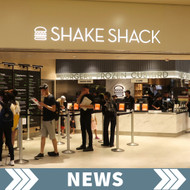After a Decade of Investment, Shake Shack UK Turns the Corner
Posted by Emma on 19th Jul 2025 Reading Time:
Shake Shack’s United Kingdom operations have crossed a long-awaited threshold, posting their first profit before tax since the brand entered the market in 2013. Diverse Dining, the UK operator of the New York–born burger chain, reported a pre-tax profit of approximately £1.06–£1.1 million for the year ended 31 December 2024, a decisive reversal from the £764,000 loss recorded in the prior year and a symbolic milestone after years of cumulative investment.
The improvement caps a multi-year recovery arc. Losses, which ballooned to a pandemic-era peak of £7.5 million in 2020, have progressively narrowed amid operational recalibration, evolving consumer habits, and the gradual normalisation of city footfall. By 2024, this trajectory culminated in profitable trading, suggesting that the model—premium positioning within the quick-service restaurant (QSR) and fast-casual overlap has re-established commercial viability in the UK context.
Top-line performance strengthened, with turnover rising from approximately £48.3 million in 2023 to £49 million and then to £51.5 million in 2024. While the revenue uplift appears modest in absolute terms, its strategic significance lies in the quality of earnings: gross profit margin advanced from 68.1% to 69.4%, and adjusted operating profit before interest, depreciation and tax expanded sharply from £0.5 million to £3.5 million. This operating leverage—extracting disproportionately higher profit from incremental sales—illustrates the benefit of prior infrastructure, brand investment, and disciplined cost management. Staff costs increased only marginally (from £14.3 million to £14.5 million), indicating gains in productive capacity and a maturing labour efficiency profile.
Expansion has not been paused in pursuit of profit; instead, controlled growth appears to have underpinned it. Two strategically sited restaurants opened during the period—London St Pancras and Birmingham Grand Central—both high-traffic transport hubs that reinforce brand visibility among domestic travellers and international visitors. With “at least three” further openings scheduled for 2025, management is signalling measured confidence: scaling from a position of improving unit economics rather than chasing volume at the expense of returns.
Digital evolution forms a structural pillar of the turnaround narrative. The operator is implementing a stronger digital presence and has broadened its delivery channel participation from one to three platforms. In an environment where convenience, aggregation, and app-mediated discovery increasingly shape dining decisions, diversified digital reach mitigates single-channel dependency. It widens the funnel for incremental, off-premise demand, particularly during softer in-restaurant dayparts.
Geographically, Shake Shack’s UK footprint now comprises 17 sites, with a deliberate concentration in London (11 locations) complemented by a selective regional presence in cities such as Birmingham, Cardiff, Oxford and Cambridge. This cluster-plus-halo approach enables brand density, supporting marketing efficiency, supply chain synergies, and staffing flexibility, while still probing secondary markets for scalable demand without overextending capital.
Strategically, management frames the current environment as one where “market uncertainty presents both challenges and opportunities,” an assessment that underscores the duality of cost pressures (labour, energy, and supply chain) and the opportunity to capture market share from less differentiated operators. The shift into profit affords optionality, as reinvestment in guest experience, digital refinement, and site acquisitions can now be funded to a greater extent from internally generated cash flow, potentially reducing reliance on external capital.
Contextually, Shake Shack’s UK journey aligns with the broader maturation of the global brand, which has evolved from a single kiosk in New York in 2001 into a network of more than 430 restaurants across approximately 20 countries. The delayed profitability in the UK emphasises that premium QSR localisation is rarely linear. It demands patience, brand storytelling tailored to local preferences, and operational resilience in the face of macroeconomic shocks. The 2024 inflexion suggests that the brand’s proposition—chef-inspired fast casual quality with an accessible, experiential edge—has achieved sufficient consumer resonance to sustain disciplined expansion.
Looking ahead, the pivotal question is whether 2024 marks a one-off rebound or the foundation of a durable profit run. Key watchpoints include sustaining margin gains amid wage inflation, balancing delivery growth with risks of diluting the in-restaurant experience, and preserving brand distinctiveness as competition intensifies in the better-burger and premium chicken segments. Suppose management can translate early digital gains, judicious site selection, and operating leverage into consistent returns. In that case, the UK platform may evolve from long-gestation investment to a meaningful contributor within Shake Shack’s international portfolio.
For now, crossing into profitability after more than a decade of market presence is more than an accounting milestone; it is a strategic validation moment—proof that patience, disciplined expansion, and operational refinement can convert early-stage brand capital into tangible shareholder value in a challenging, fast-evolving dining landscape.





